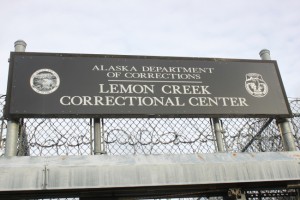A commission set up by the Alaska Legislature in 2014 has issued a report on Alaska’s corrections and judicial systems. They say the judicial and corrections systems cost the state a lot, but they don’t do enough to improve public safety.

Commission members presented the findings and recommendations to the House Finance Committee on Monday.
Alaska Criminal Justice Commission chair Greg Razo told legislators Alaska is expected to run short of prison beds next year.
“Alaska’s prison population has grown 27 percent in the last decade. That’s very significant growth,” said Razo. “Our prison population grew roughly three times faster than our resident population. The state spends over $300 million on corrections each year, and hundreds of millions more every time we build a new prison.”
Razo said some of the high costs have to do with the type of people who get put into prison — half of them have not been convicted of a crime. They’re waiting to go to trial.
He said that’s not money well spent.
“Alaskans are not getting a good public safety return on this spending. We are not seeing return on investment,” said Razo. “Why? Because nearly two out of three inmates who leave Alaska’s prisons return to prison or jail within three years.
Razo said one reason for that high rate of recidivism is that not enough is done to help inmates re-enter society, find jobs, and live a crime-free life. For example, Razo said, when he visited the Anvil Mountain Correctional Center in Nome, which can hold 150 inmates, he asked inmates:
“‘If you’re in prison for an alcohol-related offense, would you raise your hand?’ And I would say that all but six raised their hands. ‘If you’re in for a drug-related offense, raise your hands,’ and the other six people raised their hands,” said Razo. “So we’ve got all these people in there with significant substance abuse problems, y’know, committing crimes. And there’s absolutely nothing that happens to them [in prison] in terms of that treatment.”
Razo said vocational training would also better prepare inmates for their release. He said the Anvil Mountain employees were dedicated, but “completely under-resourced.”
“We saw their library, which had about half a dozen paperback books in it,” said Razo. “We saw where they had their computers. They had three computers that, I asked ‘how many of these actually work?’ None of them worked. They just sat there.”
And a significant number of inmates are mentally ill. That’s according to commission member Jeff Jesse, director of the Alaska Mental Health Trust.
“Corrections doesn’t like being the largest mental health provider in the state any more than we like them being in that role,” Jesse said.
Also, Razo said, research has shown long prison sentences are no more effective at preventing crime than shorter stays. Rep. Les Gara, an Anchorage Democrat, had a question about that.
“Is there any truth to what you hear, that if you throw a low-level non-violent, especially young offender in jail for a longer period of time, what you do is not really make society safer in some cases but they learn how to be better criminals in jail. And that makes society less safe,” said Gara. “Is there any truth to that?”
“Yes, the evidence supports that,” Razo replied. “We reviewed that, and it became part of the basis for our recommendations.”
Susan Di Pietro is an attorney for the Judicial Council. She told legislators the Commission’s recommendations are based on extensive research on what works.
“Four other states that have engaged in an exercise like this — where they’ve adopted evidence-based ways to reduce the prison population and reinvest in treatment and other types of recidivism reduction services — have seen reductions in their prison populations that disproportionately positively impact minorities,” Di Pietro told legislators.
Some of the Commission’s recommended changes would cut costs, such as revised pre-trial practices and a stronger focus on using prison beds for serious and violent offenders. The commission recommends some of those savings go to programs to reduce recidivism, including victims’ services, violence prevention, reentry support, and substance abuse treatment in both rural and urban areas.
For more on successful prisoner re-entry, see a five-part story produced by Alaska Public Media Urban Affairs reporter Anne Hillman. It’s called “Hitting Reset: Life After Prison.”
Joaqlin Estus is a reporter at KNBA in Anchorage.




